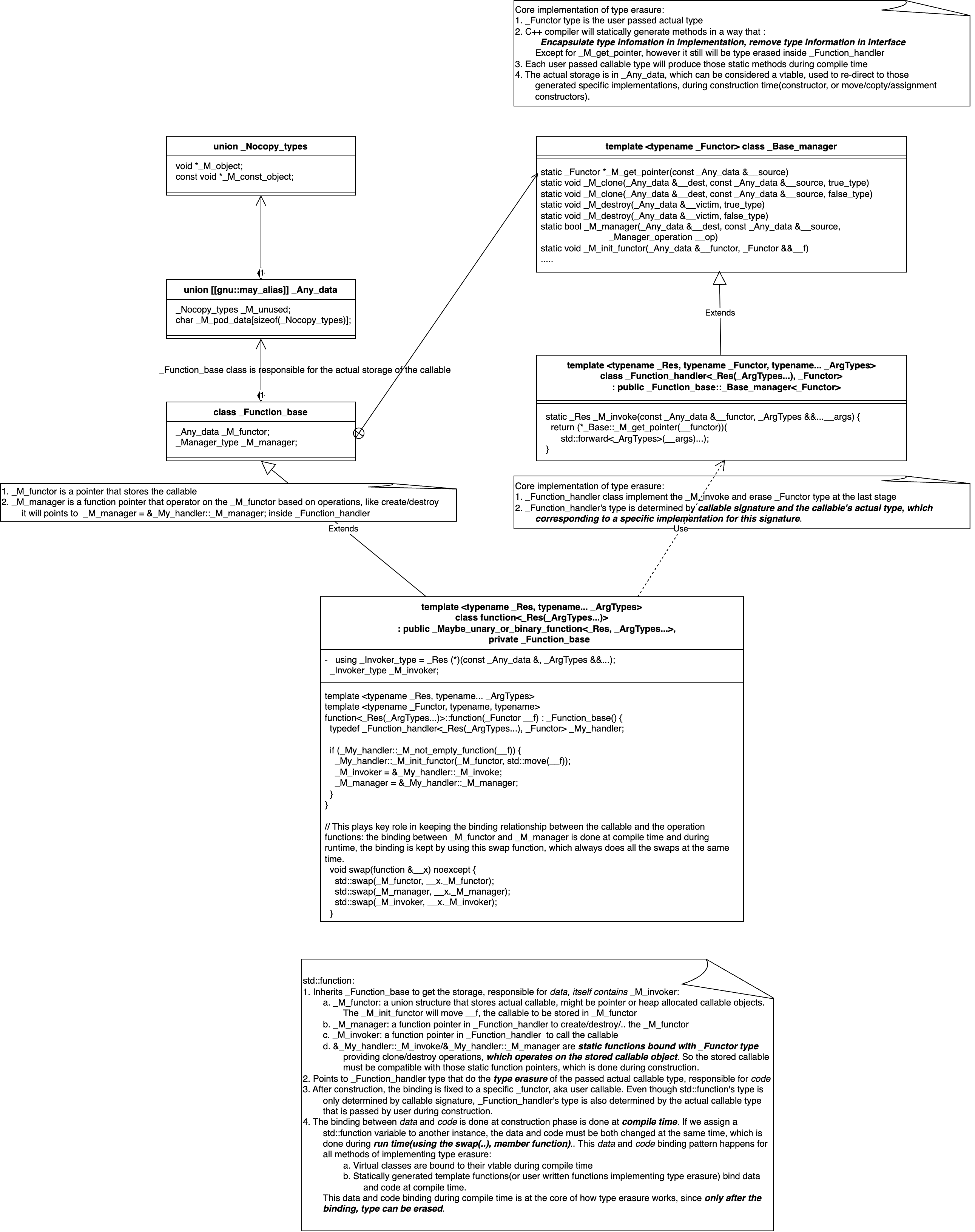Type Erasure Part Two: How std::function Works
std::function Implementation:
Inherits _Function_base to get the storage, responsible for data, itself contains _M_invoker:
_M_functor: A union structure that stores actual callable, might be pointer or heap allocated callable objects. The_M_init_functorwill move__f, the callable to be stored in_M_functor_M_manager: A function pointer in_Function_handlerto create/destroy/… the_M_functor_M_invoker: A function pointer in_Function_handlerto call the callable&_My_handler::_M_invoke/&_My_handler::_M_manager: Static functions bound with_Functortype providing clone/destroy operations, which operates on the stored callable object. So the stored callable must be compatible with those static function pointers, which is done during construction.
Points to _Function_handler type that do the type erasure of the passed actual callable type, responsible for code
After construction, the binding is fixed to a specific _functor, aka user callable. Even though std::function’s type is only determined by callable signature, _Function_handler’s type is also determined by the actual callable type that is passed by user during construction.
The binding between data and code is done at construction phase at compile time. If we assign a std::function variable to another instance, the data and code must be both changed at the same time, which is done during run time (using the swap(...) member function). This data and code binding pattern happens for all methods of implementing type erasure:
- Virtual classes are bound to their vtable during compile time
- Statically generated template functions (or user written functions implementing type erasure) bind data and code at compile time
This data and code binding during compile time is at the core of how type erasure works, since only after the binding, type can be erased.
